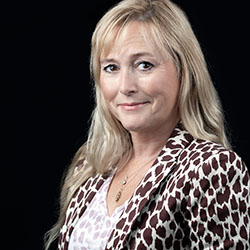
Photo by Joshua Sortino on Unsplash
The healthcare industry traditionally has used site-based clinical trials to assess the efficacy and safety of drugs and medical devices. Data collected from patients participating in these site-based studies would be analyzed to evaluate the suitability of a medical product for commercial release.
However, the exponential increase in patient data recorded by digital devices in recent years has introduced to trial sponsors and researchers the possibility that real-world data (RWD) and real-world evidence (RWE) may be used to augment data from a clinical trial.
While RWD and RWE often are conflated, they are not the same. As the FDA explains, “Real-world data are the data relating to patient health status and/or the delivery of healthcare routinely collected from a variety of sources.” RWD can come from multiple sources, including electronic health records (EHRs), claims and billing activities, product and disease registries, patient-generated data and data gathered from other sources, such as mobile devices, that can provide data for assessing a person’s health status.
Real-world evidence, according to the FDA, is the “clinical evidence regarding the usage and potential benefits or risks of a medical product derived from analysis of RWD. RWE can be generated by different study designs or analyses, including but not limited to, randomized trials, large simple trials, pragmatic trials, and observational studies (prospective and/or retrospective).”
It’s fair to argue that the FDA’s definitions of RWD and RWE are healthcare provider-centric and shouldn’t be limited to data that’s routinely collected. As the emergence of connected digital devices has shown, data can be collected in other ways and at intervals more reflective of a real-world scenario for patients.
RWE is meaningful evidence
RWD is any data that represents the health status of, or any care received by, individuals in their normal real-world settings instead of a controlled clinical trial setting. When you apply appropriate analysis to quality RWD, the result is meaningful evidence in the form of RWE. That evidence can be used in many ways, such as answering research/clinical questions or supporting operational activities for other research studies and clinical trials.
Healthcare to date hasn’t been effective at integrating this data, but considerable progress is expected over the next five or 10 years. The time will soon come when sensors on inhalers will be able to assess the health status of a patient with asthma. AI algorithms can access this data to predict and notify the patient’s allergist or respiratory therapist of a possible exacerbation. This allows the clinician to schedule an appointment to interview, examine and provide care for the patient to prevent an exacerbation.
Biggest beneficiaries of RWE
Five specific healthcare stakeholders benefit from RWE. On a volume basis, the largest data consumers are pharmaceutical and medical device companies seeking to assess RWE throughout the drug and product development cycle.
The second group of stakeholders that need RWE are regulators.
These government agencies are tasked with using evidence with which to base regulatory decisions that have implications
for not only the companies seeking approval but consumers as well.
A third stakeholder that sees substantial benefits from accessing RWE is health plans. Following approval of their products by the FDA or another regulatory body, drug and medical device companies must generate evidence for payers to determine how much and what kind of authorizations they require for reimbursement.
Providers are a fourth group that derives value from RWE, which clinicians use to inform diagnosis methods and treatment recommendations. Finally, healthcare consumers are becoming much more involved with treatment decisions and thus becoming more interested in RWE to support evidence-based choices.
RWE reliability and accessibility
Data reliability must be a priority to use RWE with confidence in clinical trials. Stakeholders need to determine how reliable data is from each of many points of origin, as well as whether the data remains reliable once it is translated, processed, or merged with other data sources.
Another consideration is that reliability can be relative depending on the audience for the RWE data and its purpose. Doing an exploratory analysis for internal consumption, for example, requires a lower level of rigor than if the evidence were being submitted to a regulatory agency for approval.
Interoperability also has an impact on the accessibility of RWE. Data must be collected, stored and shared, but not all stakeholders have equal digital capabilities. Working with a large academic medical system is vastly different than working with your local community center to share data.
Getting the most out of RWE
To optimize the value of RWE, trial sponsors should start by conducting a quality assessment of the data collected at each source. While this can be a long and difficult process, it has no value if you can’t trust your data. Remember, no data source is perfect; they all have their limitations. But through a robust qualification process, data sources can be identified that best fit a specific study’s needs.
Once your assessment lets you know what you have, the next step is filling in the holes. This might mean a deep dive into handwritten notes, medical records, charts, or natural language processing through machine learning.
Reducing gaps in data also might require engaging with patients. Decentralized clinical trial (DCT) platforms are ideal for collecting data from wherever study participants are located – even in their homes. DCTs provide a richer data set collected in a shorter amount of time and at less expense while ensuring the patient’s perspective is represented.
Another way to avoid RWE-related issues is to add RWD collection post-treatment with tokenization built into the trial design preapproval and then executed during the drug development life cycle. Tokenization uses a dataset’s underlying identifying information to create a de-identified key that anonymously links records across disparate data sets.
Tokenizing clinical trial data enables RWD to be linked to data from these clinical studies without exposing patient identities; the RWD doesn’t have to be determined or linked right at the beginning of the study. Tokenization can be a way to “future-proof” your study by being able to link to RWD after the study is under way.
Conclusion
By providing comprehensive real-world evidence, RWD and RWE show great promise for accelerating the development of safe and effective drugs and medical devices. In addition, focusing on data reliability, leveraging decentralized clinical trial platforms, and employing tokenization will allow trial sponsors to leverage RWD and RWE. The result will be improved patient safety and
lower clinical trial costs.

Jane Myles has spent her career evolving the clinical research process with a focus on creating a more patient-centric approach. Touting more than a decade leading research trials for some of the pharmaceutical industry heavyweights, today Myles serves as the vice president of clinical trial innovation for Curebase.

Dr. Aaron Kamauu
Dr. Aaron Kamauu is an advisor in the Real-World Data (RWD) space, specifically focusing on leveraging real-world healthcare data to support a variety of clinical research, informatics, clinical trials and drug development activities, including pharmacoepidemiology, outcomes research, protocol design, site identification, data-driven patient recruitment and the use of RWD to support evidence generation and submission to regulatory agencies. Today Dr. Kamauu serves as the managing director of Ikaika Health LLC.